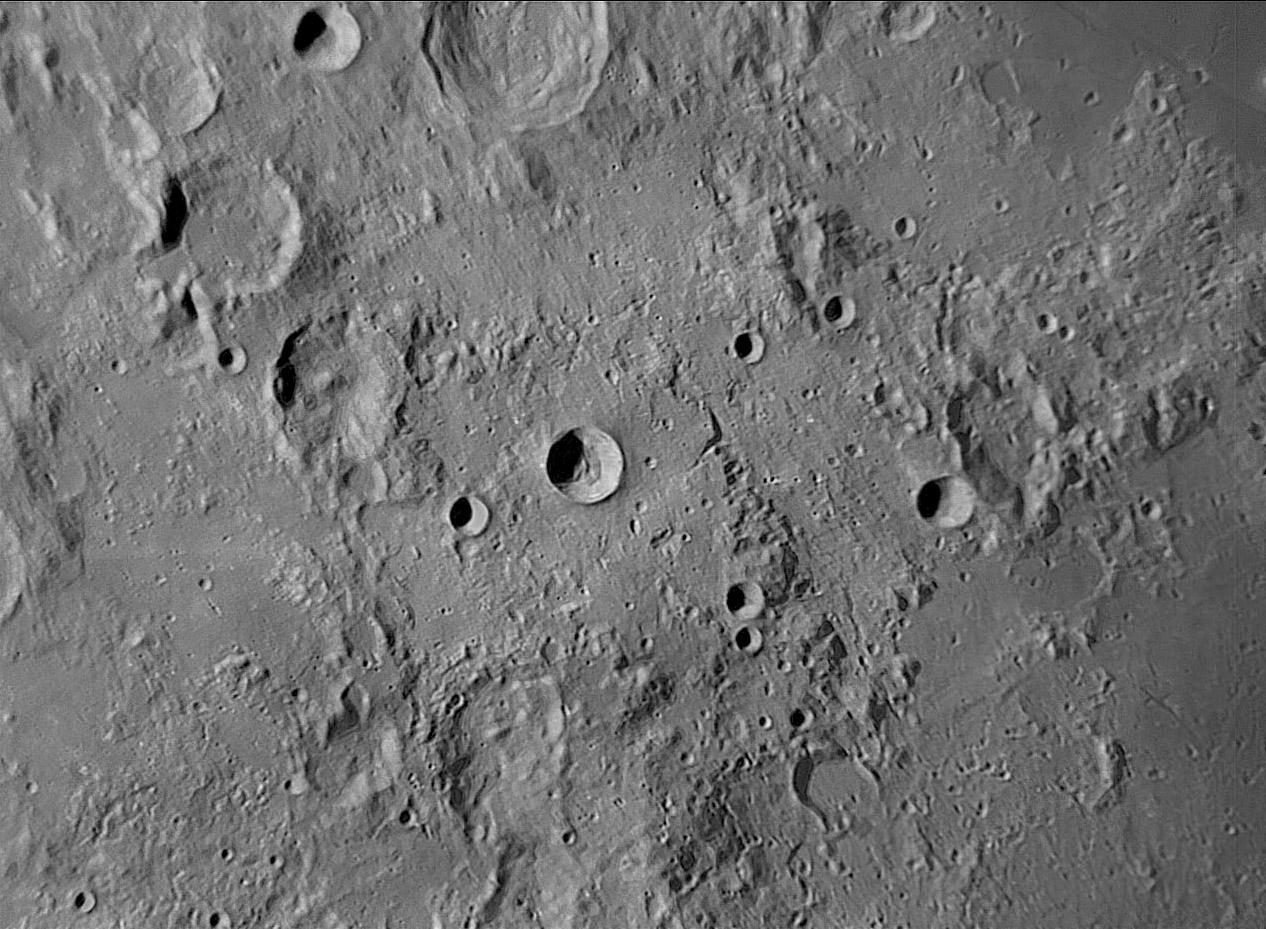
image by Carmelo Zannelli
Nearly a year ago Carmelo provided LPOD a low Sun image of Delambre (top center), and now he complements it with a high Sun view whose purposely gray monotone reminds me of the 100 year old Paris Observatory prints of the Moon. This is an area that seems to be infrequently imaged - a reason I like it - and shows a number of odd features. The bottom third is speckled with apparent small secondary craters but I am not sure of the primary; was it Theophilus? And the left of center crater Taylor is seen to be strangely modified. The inner wall is rounded and smooth, with apparent continuity between material inside the crater and beyond its southern rim. Another variant of this occurs at the more degraded crater Zollner near the bottom center. What is left of its southern rim is plastered by smooth material with a striated surface. The deposits on these crater rims and widely distributed across this scene is probably ejecta from the Imbrium basin formation that arrived ballistically and then flowed across the surface. Most of the surface here is older than Imbrium, with 21 km wide Alfraganus (center) and a few other crisp craters being younger. And what of the smooth material southwest of Taylor? Is it also younger than Imbrium or is it simply another type of basin ejecta from the catastrophic event?
Technical Details:
10 Oct 2006, 00:41UT. 280mm SCT @ ~7500 mm + Lumenera Infinity 2-1 M camera + IR cut-off filter; 240 of 1220 stacked frames.
Related Links:
Rükl chart 46
Lunar Orbiter IV view
COMMENTS?
Register, and click on the Discussion tab at the top of the page.



